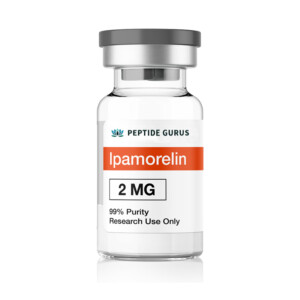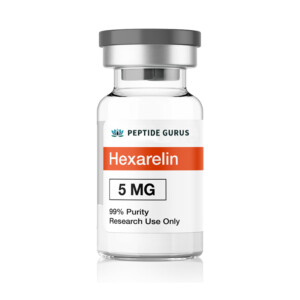En el ámbito de la medicina y la bioquímica modernas, la comparación entre Retatrutida y péptidos de alta pureza se ha convertido en un punto central de discusión. retatrutida, un nuevo agente terapéutico, está ganando terreno por sus posibles aplicaciones en el tratamiento de diversas afecciones médicas. Por otro lado, Los péptidos de alta pureza se han establecido desde hace mucho tiempo como componentes esenciales tanto en entornos clínicos como de investigación.. Este artículo pretende profundizar en los entresijos de estas dos entidades, explorando sus definiciones, usos, beneficios, y posibles inconvenientes.
Retatrutida es un compuesto sintético diseñado para imitar procesos biológicos naturales.. It is part of a class of drugs known as peptide mimetics, which are engineered to enhance or inhibit specific biological pathways. Retatrutide’s primary mechanism of action involves binding to specific receptors in the body, thereby modulating physiological functions. This makes it a promising candidate for treating conditions such as metabolic disorders, cardiovascular diseases, and certain types of cancer.
High purity peptides, por otro lado, are short chains of amino acids that are synthesized to achieve a high degree of purity. These peptides are crucial in various scientific and medical applications, including drug development, diagnostic procedures, and therapeutic interventions. The purity of these peptides is paramount, as impurities can significantly affect their efficacy and safety. Techniques such as high-performance liquid chromatography (HPLC) are often employed to ensure the purity of these peptides.

One of the key differences between Retatrutide and high purity peptides lies in their molecular structure and function. While Retatrutide is a complex synthetic molecule designed to interact with specific biological targets, high purity peptides are relatively simpler in structure but equally important in their roles. The complexity of Retatrutide allows for targeted therapeutic effects, whereas the simplicity of high purity peptides makes them versatile tools in research and medicine.
The therapeutic potential of Retatrutide is a subject of ongoing research. Preliminary studies suggest that it may offer significant benefits in managing conditions like type 2 diabetes, obesidad, and certain inflammatory diseases. Its ability to modulate specific biological pathways without causing widespread side effects is one of its most appealing attributes. Sin embargo, further clinical trials are needed to fully understand its efficacy and safety profile.
High purity peptides, by contrast, have a well-established track record in both research and clinical settings. They are used in the development of peptide-based drugs, which are designed to target specific proteins or receptors in the body. These peptides are also employed in diagnostic tests, where their high specificity and sensitivity are invaluable. Además, high purity peptides are used in various therapeutic applications, including hormone replacement therapies and cancer treatments.
The production of Retatrutide involves complex chemical synthesis and rigorous quality control measures. This ensures that the final product is both effective and safe for use. The synthesis process typically includes multiple steps, such as peptide bond formation, purificación, and characterization. Each step is meticulously monitored to ensure that the final product meets stringent quality standards.
En contraste, the production of high purity peptides is often more straightforward but equally demanding in terms of quality control. Techniques such as solid-phase peptide synthesis (SPSS) are commonly used to create these peptides. SPPS allows for the sequential addition of amino acids to a growing peptide chain, resulting in a high degree of purity and consistency. The final product is then subjected to rigorous testing to confirm its purity and functionality.
One of the major advantages of retatrutida is its potential for targeted therapy. By specifically interacting with certain receptors or proteins, Retatrutide can modulate biological pathways with minimal off-target effects. This targeted approach reduces the risk of side effects and enhances therapeutic efficacy. Sin embargo, this specificity also means that Retatrutide may not be suitable for all patients, and careful patient selection is essential.

High purity peptides offer a different set of advantages. Their versatility and high specificity make them invaluable tools in various scientific and medical applications. Por ejemplo, in drug development, high purity peptides can be used to create peptide-based drugs that target specific proteins or receptors. In diagnostic procedures, these peptides can be employed to detect specific biomarkers with high sensitivity and accuracy.
Despite their differences, Retatrutide and high purity peptides share some common challenges. One of the primary challenges is ensuring the stability of these compounds during storage and transportation. Both Retatrutide and high purity peptides are sensitive to environmental conditions such as temperature and humidity. Proper storage conditions and robust packaging are essential to maintain their stability and efficacy.
Another common challenge is the cost of production. The synthesis of Retatrutide and high purity peptides involves complex processes and high-quality raw materials, which can be expensive. This cost is often passed on to the end-users, making these compounds relatively expensive. Efforts are ongoing to develop more cost-effective production methods without compromising on quality.
The regulatory landscape for Retatrutide and high purity peptides also presents challenges. Both types of compounds must undergo rigorous testing and evaluation by regulatory authorities before they can be approved for use. This process can be time-consuming and costly, but it is essential to ensure the safety and efficacy of these compounds. Regulatory requirements may vary from one region to another, adding another layer of complexity to the approval process.
The future prospects for retatrutida and high purity peptides are promising. Advances in biotechnology and synthetic chemistry are paving the way for the development of more effective and safer therapeutic agents. For Retatrutide, ongoing research is focused on identifying new therapeutic targets and optimizing its pharmacological properties. For high purity peptides, innovations in synthesis techniques and purification methods are expected to enhance their utility in various applications.
En resumen, the comparison between Retatrutide and high purity peptides highlights the unique characteristics and potential applications of each. retatrutida, with its targeted therapeutic effects, offers promising prospects for treating a range of medical conditions. High purity peptides, with their versatility and high specificity, continue to be invaluable tools in research and clinical settings. Both types of compounds face common challenges, such as stability, costo, and regulatory hurdles, but ongoing advancements are expected to address these issues.
The interplay between Retatrutide and high purity peptides underscores the importance of continued research and innovation in the field of biochemistry and medicine. By understanding the strengths and limitations of each, researchers and clinicians can make informed decisions about their use in various applications. This knowledge will ultimately contribute to the development of more effective and safer therapeutic agents.
As the field of biochemistry continues to evolve, the roles of Retatrutide and high purity peptides are likely to expand. New discoveries about their mechanisms of action, therapeutic potential, and safety profiles will provide valuable insights into their use. Collaborative efforts between researchers, clinicians, and regulatory authorities will be essential to harness the full potential of these compounds.
The comparison between Retatrutide and high purity peptides also highlights the broader trends in drug development and therapeutic interventions. The shift towards targeted therapies and personalized medicine is driving the development of compounds like Retatrutide, which offer tailored therapeutic effects with minimal side effects. High purity peptides, with their versatility and specificity, are well-positioned to play a key role in this evolving landscape.
En conclusión, the comparison between Retatrutide and high purity peptides provides a comprehensive understanding of their unique characteristics, potential applications, and common challenges. Both types of compounds hold significant promise for advancing medical science and improving patient outcomes. Continued research and innovation will be crucial to unlocking their full potential and addressing the challenges they face.
The future of medicine and biochemistry is bright, with compounds like retatrutida and high purity peptides leading the way. As we continue to explore their therapeutic potential and refine their production methods, these compounds will undoubtedly play a pivotal role in shaping the future of healthcare. By leveraging their unique properties, we can develop more effective and safer treatments for a wide range of medical conditions.
Al final, the comparison between Retatrutide and high purity peptides serves as a testament to the power of scientific innovation and collaboration. By understanding the strengths and limitations of each, we can make informed decisions about their use in various applications. This knowledge will not only advance medical science but also improve patient care and outcomes in the years to come.
Todos los productos de este sitio son para investigación., Uso exclusivo para desarrollo. Los productos no son para consumo humano de ningún tipo..
Las declaraciones realizadas en este sitio web no han sido evaluadas por la Administración de Alimentos y Medicamentos de EE. UU. ni por HEALTH CANADA.. Las declaraciones y los productos de esta empresa no pretenden diagnosticar, tratar, curar o prevenir cualquier enfermedad.
PeptideGurus es un proveedor de productos químicos. PeptideGurus no es una farmacia de compuestos ni una instalación de compuestos químicos según se define en 503A de la Ley Federal de Alimentos., Droga, y acto cosmético. Peptide Sciences no es una instalación de subcontratación según lo definido en 503B de la Ley Federal de Alimentos., Droga, y acto cosmético.

